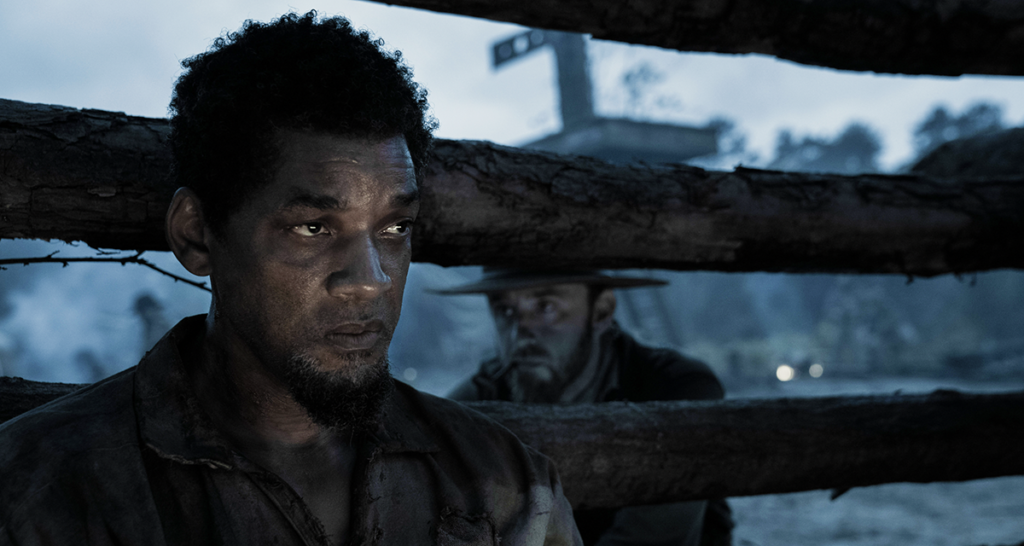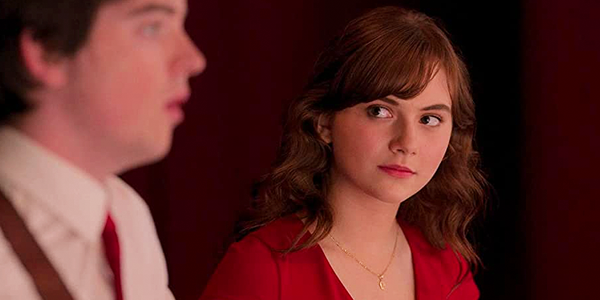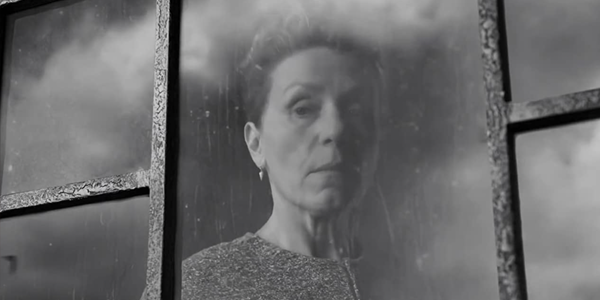ALSO ON CINELUXE
Sign up for our monthly newsletter
to stay up to date on Cineluxe
This historically based Will Smith vehicle about an escaped slave sacrifices some badly needed character development for action scenes and atmosphere
by Roger Kanno
December 20, 2022
Apple TV+ began streaming its latest high-profile feature film, Emancipation, from its own production company, Apple Original Films, on December 9th after a limited run in theaters the week prior. Starring Will Smith and directed by Antoine Fuqua, it tells the story of Peter, a former slave, and his harrowing escape from a Confederate prison work camp and his bid to reunite with his family. The film is loosely based on the true story of Gordon, who escaped from a Louisiana plantation and joined the Union army in 1863. A photo of Gordon’s heavily scarred back, taken when he arrived at a Union Army camp after his escape, became a symbol of the abolitionist movement during the Civil War.
Smith delivers a powerful performance as Peter, disappearing into the role and bringing a full range of emotions, from love to fear to anger, as well as an unyielding sense of conviction. Jim Fassel (Ben Foster), a slave hunter who tracks Peter relentlessly through the swamps of Louisiana is a less complex character study, but Foster brings an eerie and disturbingly quiet sense of menace to the screen that is unsettling. Smith and Foster are both exceptional in their performances but I can’t help but think there could have been more depth to their characters had they been given more of an opportunity to explore them. Charmaine Bingwa also deserves mention for her dignified portrayal of Peter’s wife, Dodienne, whose careful actions and peaceful wisdom speak volumes of her personal strength.
Bill Collage’s screenplay and Fuqua’s taut direction keep the action moving at a breakneck pace as Peter tries desperately to elude Fassel’s pursuit, providing plenty of suspenseful action. However, the film begins by establishing the horrific treatment of Peter and his family before transitioning somewhat unexpectedly to an action-packed account of Peter’s flight from Fassel. The storyline establishing Peter’s motivations continues to be explored with flashbacks and occasional scenes of his family interspersed during the chase, but seems tacked-on and doesn’t fully illuminate this critical aspect of the story.
The spacious music score composed by Marcelo Zarvos and presented in Dolby Atmos provides a brooding and atmospheric aural underpinning that is wonderfully open and involving. Ominous, resonant tones of strings inspired by Haitian and African rhythms are enhanced by equally menacing horns and percussion that emanate from deep within the wide front soundstage. The sounds of construction at the work camp and the echoing of far-off noises in the swamp are just as expansive as the music. While most of the film relies on the excellent orchestral score and subtle Foley effects, the final battle scene provides plenty of explosions, gunfire, and screams of soldiers that are mixed in an extremely enveloping manner, although the bass is not exceedingly deep, even from the retort of the massive Confederate cannons.
The highly stylized visuals are the result of Fuqua’s collaboration with Academy Award-winning cinematographer Robert Richardson. The Dolby Vision color grade is often nearly devoid of color and appears almost black and white in some instances. The lush backgrounds of the swamps are barely tinged with the faintest greens and browns, taking on a desolate look that mirrors the harshness of the film’s subject. While the mostly colorless imagery is quite barren, its stark minimalism is hauntingly beautiful. The picture remains sharp throughout, except for some occasional breakup and aliasing during scenes where the camera pans quickly through the swamp and there is a lot of foliage visible in the foreground.
I enjoyed the distinctive visuals and excellent sound design of Emancipation, which were well-served by a high-quality home theater system. Nonetheless, this important and historic story is handled clumsily and even some fine performances and technically proficient production can’t quite overcome the lack of narrative direction.
Roger Kanno began his life-long interest in home cinema almost three decades ago with a collection of LaserDiscs and a Dolby Surround Pro Logic system. Since then, he has seen a lot of movies in his home theater but has an equal fascination with high-end stereo music systems. Roger writes for both Sound & Vision and the SoundStage! Network.
PICTURE | The Dolby Vision color grade is often nearly devoid of color, appearing almost black & white in some instances, but while the mostly colorless imagery is quite barren, its stark minimalism is hauntingly beautiful
SOUND | While most of the film relies on the excellent orchestral score and subtle Foley effects, the final battle scene provides plenty of explosions, gunfire, and screams of soldiers that are mixed in an extremely enveloping manner, although the bass is not exceedingly deep
© 2023 Cineluxe LLC






